Planting parsley and other important issues in growing greens
Parsley is the most common seasonal herb in our country. Possessing a recognizable delicate aroma and mild taste, parsley can be an addition to any dish. It is impossible to imagine summer soups and salads without its greenery, and due to the fact that it retains its fresh attractive appearance for a long time, parsley sprigs are ideal for decorating sandwiches and salads. In addition, parsley is rich in vitamins and stimulates digestion. Growing parsley on your site is not too difficult. It belongs to biennial plants: in the first year, seedlings appear from the seeds, a green rosette and an underground root crop are formed. In the second season, greens break through from the root crop and a straight arrow topped with an umbrella forms. From it you can collect seeds for further sowing.
Content:
- Planting dates for parsley
- Growing parsley in a greenhouse
- Growing parsley outdoors
- Care and cleaning
Planting dates for parsley
There are several options for growing parsley. The first most common option for summer residents is sowing in early spring, immediately after the frosts have gone (mid-March - early April). The second way is to sow seeds before winter, in late October - early November with the approach of the first frost.
Parsley belongs to frost-resistant crops, the approaching cold will stop the germination of seeds, seedlings will appear in early spring and will delight you with fresh herbs.
The third option involves sowing by a conveyor method with a difference of 3-4 weeks until mid-August, in this case you will always have tender shoots of young plants. Another method is planting tubers, it is used not only to obtain seeds, a large harvest of greens can be obtained from one tuber.
Growing parsley in a greenhouse
For cultivation in a greenhouse, both methods are suitable: sowing seeds and planting root crops. Before planting, the seeds are kept in a humid environment (between two layers of tissue) at room temperature for about five days. After the seeds hatch, they should be kept for another two days at a low temperature, about 2 ° C. This method of seed preparation accelerates germination (seedlings may appear within a week after sowing in the ground) and increases yield. Forcing from root crops involves preliminary holding of the planting material at low temperatures in wet sand. They are planted in prepared and watered grooves at an angle of about 45 ° and sprinkled with soil so that the top of the root crop remains open. The distance between the grooves is about 15 cm, the distance between the root crops is 6-7 cm. Growing parsley by forcing from the root crop gives a higher yield than from seeds, about 4 times. But the process is more laborious, because first you need to get root crops.
Growing parsley outdoors
- Preparation of seeds for sowing in open ground involves exposure and germination in a damp cloth for at least two days. Thus, an additional goal is pursued: you do not risk sowing and waiting for shoots from substandard seeds. Seeds remain germinating for 2-3 years.
- The preparation of the site for early spring sowing is carried out in the fall, together with the site for sowing before winter. Dig up the soil, add humus or manure, sand, superphosphates, potassium chloride. A certain amount of fertilizers are applied just before planting (ammonium nitrate, superphosphate).
- Parsley is sown to a depth of 1-2 cm, in grooves with a width of 15 cm, after the emergence of shoots, it begins to thin out, so that the distance is at least 6 cm.Periodically, the soil should be loosened; in the dry period, evening watering is required once a week.
- To increase the yield of parsley, you can choose the right site for it. A site where potatoes, cabbage or cucumbers were growing is good for her, and the area left over from beets will contribute to an increase in the root crop.
- For sowing parsley commercially, you can use the forced sprouting method. For this, thoroughly ground quicklime is introduced into the furrow intended for sowing, in a small amount. The seeds, previously soaked in milk for several hours, are sown, sprinkled with water, and the groove is covered with soil and compacted. Seedlings may appear the next day.
- Planting root crops is carried out in the same way as planting in a greenhouse. Preparation can be started 3-4 weeks before planting by placing the tubers in a box of wet sand at the end of February. It is required to plant root crops with hatching greens very carefully, in well-watered and fertilized rows.
Care and cleaning
Parsley is not demanding on moisture, additional watering is required only in dry periods, you can water it only in the evening. The distance between the shoots is 4-5 cm, if you plan to grow root crops, then at least 6-7 cm. Loosening of the soil after rain and watering is regularly required.
Harvesting parsley is possible in two ways: drying in a dry dark place and freezing.
Both methods allow preserving all valuable qualities, including the unique aroma of parsley. Parsley root vegetables are quite tough, but they are also used for food. You can store it just like carrots, in a box of sand. Parsley is a frost-resistant crop and can withstand frosts down to -10 ° C. This allows in the lower latitudes of our country to leave parsley tubers to winter under the snow, covering them with straw mats for insurance. This way you can get the very first greens to your table.



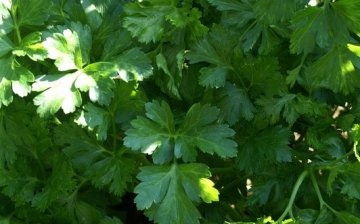
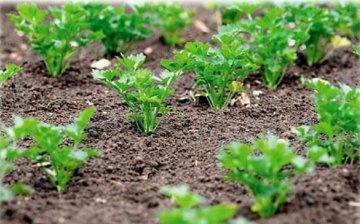
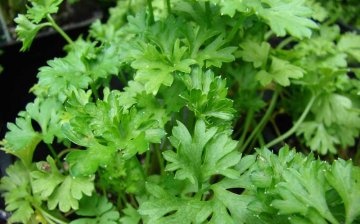



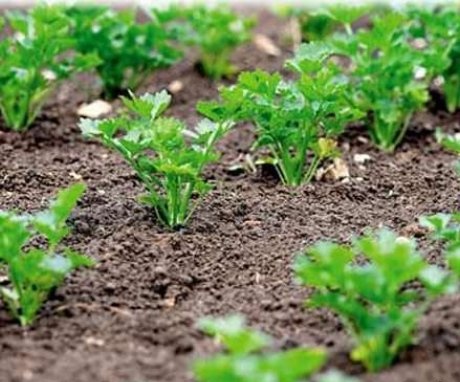
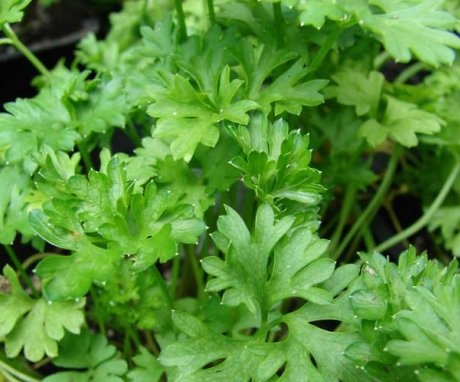
And my husband sowed parsley in a box on the balcony ... Now I cut fresh herbs before dinner! They didn't do anything special - they fed us "Ideal" once. It is, however, not high - 8 centimeters bushes, but fragrant and tasty.
... Now I cut fresh herbs before dinner! They didn't do anything special - they fed us "Ideal" once. It is, however, not high - 8 centimeters bushes, but fragrant and tasty.